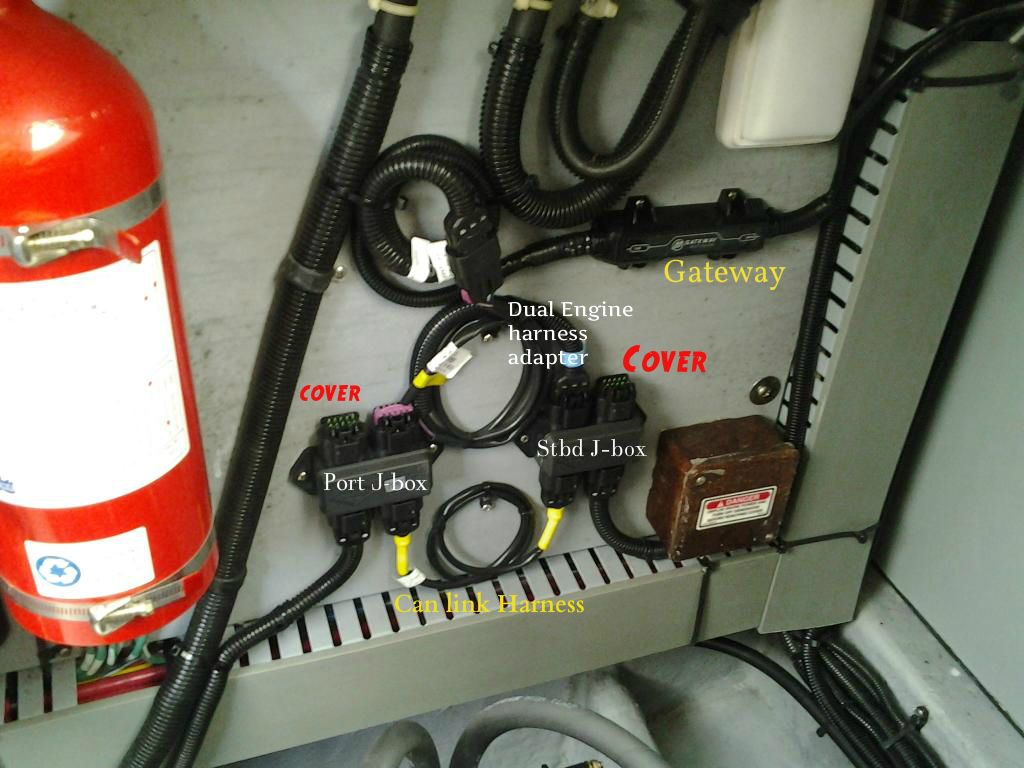jaywoodz
Member
- Nov 12, 2012
- 522
- Boat Info
- 1999 Sea Ray 310 Sundancer
- Engines
- Twin 350 MAG MPI Horizon w/V-Drives
I have had a hell of a time with my NMEA 2000 setup. Before I start complaining, I'll list out ALL of my devices.
- (2) 2008ish V-Drive Mercruiser 350 MAG MPI Horizons (300 HP)
- Raymarine E120 Classic (updated firmware, 2006ish model)
- DSM 300
- Maretron DSM 150, newly installed
- N2K Mercruiser NMEA2000 gateway from engines
Issue #1: I'm trying to desperately get my information to read accurately across ALL devices. I have successfully received data on both devices, Raymarine & Maretron. My Raymarine lists out my depth with engines on and off. The Maretron does show the depth, but only when the engines are OFF. I've called Maretron, they said they didn't know after we spent over an hour going through all the settings and troubleshooting. They think it's a power-on sequence that has to occur. Raymarine 1st, then Maretron, then engines. Thinking maybe it needs to SEE the electronics before it pushes data? Not sure where he was going with that, but going to give it a whirl next time I'm on the boat.
Issue #2: (Electrical) My Raymarine resets whenever the engines are cranking. What's the proper way to wire this up? I assume directly to a non-cranking battery. Thoughts?
Issue #3: Smartcraft sensors have been installed on my fuel tanks to send data TO the ENGINE, then from the ENGINE to the N2K gateway, therefore showing on my raymarine and dsm 150. The problem is that I think the connector on the engine that is connected to my port fuel tank has gone bad. I cannot get both engines to show tank levels, only 1. So.. to troubleshoot, I removed one of the sensors from the other tank, and simply connected it to the other engine, and boom.. it's reading correct tank levels for that tank. My question is.. how often do those connectors go bad? It's on the wiring harness of the engine, and I believe it's labeled "fuel paddle, something".. I can't remember, it was faded.
Any help would be appreciated.
- (2) 2008ish V-Drive Mercruiser 350 MAG MPI Horizons (300 HP)
- Raymarine E120 Classic (updated firmware, 2006ish model)
- DSM 300
- Maretron DSM 150, newly installed
- N2K Mercruiser NMEA2000 gateway from engines
Issue #1: I'm trying to desperately get my information to read accurately across ALL devices. I have successfully received data on both devices, Raymarine & Maretron. My Raymarine lists out my depth with engines on and off. The Maretron does show the depth, but only when the engines are OFF. I've called Maretron, they said they didn't know after we spent over an hour going through all the settings and troubleshooting. They think it's a power-on sequence that has to occur. Raymarine 1st, then Maretron, then engines. Thinking maybe it needs to SEE the electronics before it pushes data? Not sure where he was going with that, but going to give it a whirl next time I'm on the boat.
Issue #2: (Electrical) My Raymarine resets whenever the engines are cranking. What's the proper way to wire this up? I assume directly to a non-cranking battery. Thoughts?
Issue #3: Smartcraft sensors have been installed on my fuel tanks to send data TO the ENGINE, then from the ENGINE to the N2K gateway, therefore showing on my raymarine and dsm 150. The problem is that I think the connector on the engine that is connected to my port fuel tank has gone bad. I cannot get both engines to show tank levels, only 1. So.. to troubleshoot, I removed one of the sensors from the other tank, and simply connected it to the other engine, and boom.. it's reading correct tank levels for that tank. My question is.. how often do those connectors go bad? It's on the wiring harness of the engine, and I believe it's labeled "fuel paddle, something".. I can't remember, it was faded.
Any help would be appreciated.





